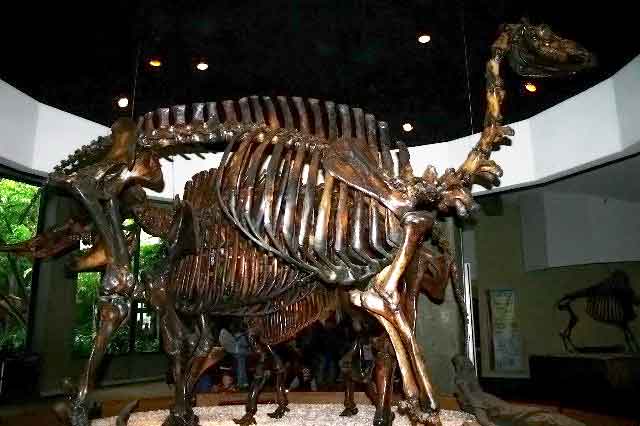- Camelops
Taxobox
fossil_range = latePliocene to latePleistocene
name = "Camelops"

image_width = 250px
image_caption = "Camelops hesternus "
regnum =Animal ia
phylum =Chordata
classis =Mammal ia
ordo =Artiodactyla
familia =Camelidae
tribus = †Camelopini
genus = †"Camelops"
subdivision_ranks = Species
subdivision = †"Camelops sulcatus " †"Camelops huerfanensis " †"Camelops kansanus " †"Camelops traviswhitei " †"Camelops hesternus" †"Camelops minidokae "Camelops" is an extinct
genus ofcamel s that once roamed westernNorth America , where it disappeared at the end of thepleistocene about 10,000 years ago. Its name is derived from the Greek κάμελος (camel) + polytonic|ὀψ (face), thus "camel-face." "Camelops" first appeared during the LatePliocene period and became extinct at the end of thePleistocene . The reason for itsextinction is poorly understood but was part of a larger North American die-off in which nativehorses ,camelid s andmastodon s also died out.Because soft tissues are generally not preserved in the
fossil record, it is not certain if camelops possessed a hump, like modern camels, or lacked one, like its modernllama relatives."Camelops hesternus" was seven feet (slightly over two meters) at the shoulder, making it slightly taller than modern bactrian camels.
Plant remains found in its teeth exhibit littlegrass , suggesting that the camel was an opportunisticherbivore ; that is, it ate any plants that were available, as do modern camels.See also
Syrian Camel , an extinct species that reached at least nine feet (2.7 m) tall at the shoulder.ee also
*"
Wal-Mart camel "
Wikimedia Foundation. 2010.
